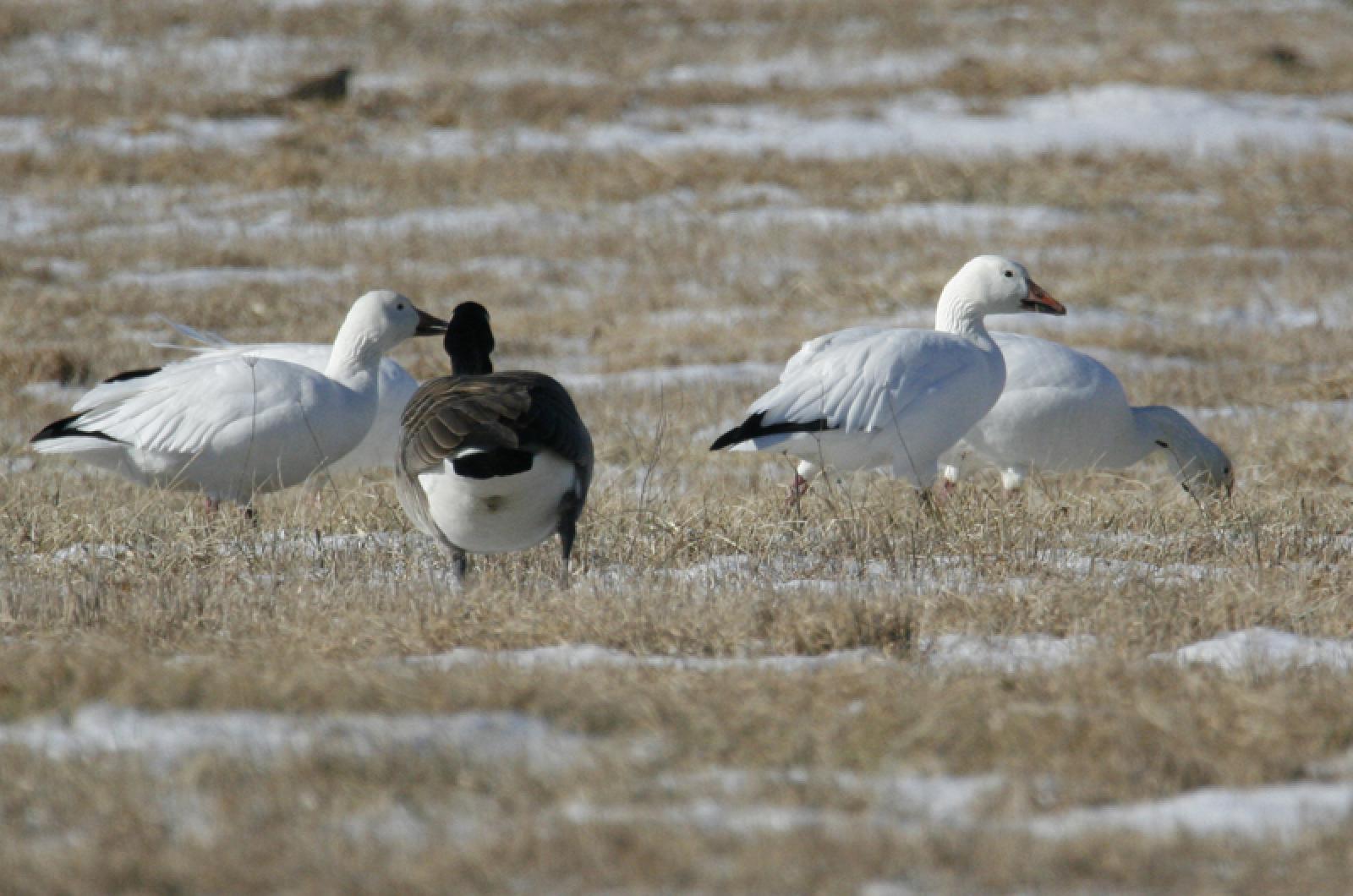We all knew that the warm weather would not last, that eventually we would get some winter weather. Well, it finally came last weekend, with temperatures in the 30s on both Saturday and Sunday, Dec. 9 to 10. Saturday was especially typical of the Vineyard’s winter weather; it was windy and raining all day long.
And so you ask, what does this have to do with birds? How many people went out looking for birds on Saturday? Not many. Apparently not too many people went out on Sunday either, although it became sunny for much of the day.
The cold, wet, and windy weather also increases the amount of food that birds need to survive. It feels colder and less comfortable to us but we put on extra clothes to keep us warm and dry. It is not so easy for birds. They need to eat more food before the bad weather arrives, food that is stored as fat so it can later (that night) serve as fuel to keep their body warm.
This extra food may come from natural sources or it may come from your bird feeder. Many observers have reported few birds at their feeder this fall, which is due to an abundance of natural foods and the warm weather we have experienced. Birds establish their winter territories based on natural food sources and your feeder. In cold weather, birds will depend on your feeders for the extra food they need to survive the cold temperatures. So do not stop filling the feeders now.
We missed out on the snow, which fell across all of Massachusetts except for the Cape and Islands area. Snow covers the ground and the berries and insects concealed there, so feeders become even more important as a source of food. Activity at feeders increases with snow on the ground.
Another major way that cold weather affects birds is with the formation of ice. Many of our winter resident waterfowl tend to stay as far north as they can, only venturing south when more northern lakes and rivers freeze over. That is now starting to happen in a big way. We can expect more winter resident waterbirds to arrive on the Island, their southern wintering grounds. And some of our winter resident songbirds also will linger longer through the winter because our milder climate. Of course, should we get a severe freeze, these birds will continue their migrations to points even further south.
Bird Sightings
Snow geese have arrived; they are the smaller and mostly white goose in with a flock of Canada geese. Ken Magnuson found one at The Farm Institute on Dec. 11, Lanny McDowell found one at the northern end of Sengekontacket Pond on Dec. 10, John Nelson found one at the Farm Institute on Dec. 10, and Hatsy Pottter observed one at Pimpneymouse Farm on Dec. 4. Are these multiple different birds or multiple sightings of the same well-travelled bird? And are any of these sightings of the much rarer and difficult to identify Ross’ goose? Stay tunes as photographs are being carefully examined.
On Dec. 11, Suzan Bellincampi reports that a male red-winged blackbird showed up at the feeders at Felix Neck. Also on that day, Jill Bouck reports a flock of about 25 tree swallows hunting the fields at Misty Meadows Farm in West Tisbury. And James Suozzo spotted two horned grebes and a mix of surf scoters, common eiders, common loons, red-breasted mergansers, and buffleheads, all in the ocean off South Beach in Edgartown.
Two razorbills were found off West Chop by Jeff Bernier on Dec. 10. The waters near the West Chop Lighthouse are often a good place to find these small penguin-like seabirds.
The immature peregrine falcon continues to impress observers as it continues to hang out at the Big Bridge. Kylee Willoughby is the latest to observe this bird, as she found it on Dec. 10. Julie Verost found it on Dec. 8 when it was perched on a 35 miles per hour speed limit sign, ironic since it can fly at speeds greater than 200 miles per hour. Hans Goeckel found it on Dec. 5 and 6, when it was perched on the bridge mere feet from the passing traffic. And Cathy Verost spotted it on Dec. 5, while Richard Price spotted it on Dec. 4. This cooperative and perhaps too tame bird has been there since Dec. 3.
There are multiple snowy owls on the Island, with most of them at various places in Edgartown. The most recent arrival is a snowy that was spotted by Bob Cassidy at the airport, much to the dismay of the resident American crows.
On Dec. 9, Happy and Steve Spongberg observed a brown creeper creeping up a beetlebung tree near their kitchen deck. She reports a second creeper on Old Farm Road on Dec. 4.
Over the first weekend in December, Richard Price reports four common loons and a red-throated loon near the big bridge. At Felix Neck he also found northern harrier, Cooper’s hawk, yellow-rumped warbler, eastern bluebird, white-throated sparrow, waterfowl, and downy, hairy, northern flicker and red-bellied woodpeckers, plus bufflehead, common eider, red-breasted merganser, black duck, mallard, and hooded merganser, great blue heron, greater yellowlegs, fish crow, American crow, and, last but not least, ruby-crowned kinglet.
Our winter residents are becoming increasingly abundant; please keep us up-to-date by reporting your sightings to birds@mvgazette.com.
Robert Culbert is an ecological consultant living in Vineyard Haven.








Comments (1)
Comments
Comment policy »